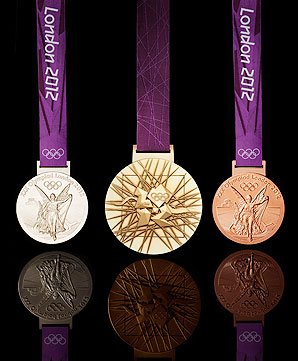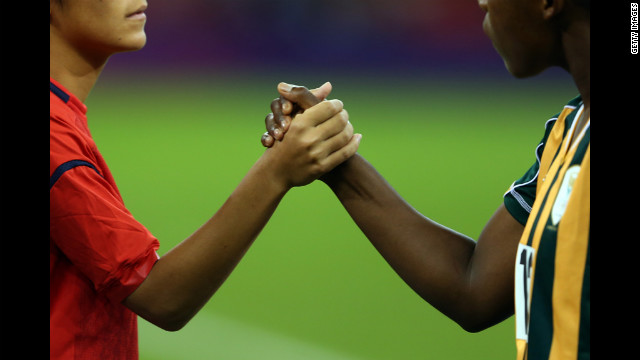The head of FIFA's Independent Governance Committee tells World Football INSIDER that his committee will soon embark on "the bigger haul" of the process to improve the way world football's governing body is run.I do not know if the 20-point list is public (I have emailed Prof. Pieth to inquire), however, a few months ago I distilled 13 recommendations made by Pieth in his original scoping paper prepared for FIFA one year ago.
Mark Pieth said putting in place a better governance structure would help to root out unethical behaviour and make FIFA more accountable.
A 20-point list will form part of discussions at the IGC's meeting at the end of September.
He said phase two of FIFA's reforms process was aimed at "organising in a pro-active way the institution to transparency and compliance on anti-corruption rules", noting that World Cup host country selection was among procedural issues "that have caused so much trouble in the past".
The biggest risk areas in FIFA's financial controls, Pieth has said, are its development programs, decisions relating to the selection of World Cup hosts as well as marketing and TV rights deals.
Recommendations will be put forward for discussion at December's meeting of the FIFA Executive Committee.
Here are those 13 recommendations are along with the grade that I assigned to the reform effort back in May:
The call-out boxes have the text of Pieth's recommendations, which is then followed by my assignment of a grade and explanation.It will be interesting to compare the current 20 point list with the recommendations originally put forward.
1. Recommendations in Analogy to the Corporate WorldGRADE: Incomplete -- FIFA has apparently taken none of these steps.
1.1 FIFA could further upgrade its existing financial governance, in particular by: a) developing a catalogue of potentially critical payments, and by deciding whether direct controls are warranted or whether indirect controls could be sufficient; b) intensifying its specific anti-corruption controls within existing COSO.
1.2. FIFA should upgrade its compliance system to meet the requirements of a state of the art corporate anti-corruption compliance programme (including a review of the Code of Ethics, the risk analysis, the detailed rules on contributions etc. and the hiring of third parties, education and training as well as notification channels). Particular emphasis needs to be placed on the credible implementation of the programme. Member Associations and Confederations should be encouraged to adopt comparable standards.GRADE: F -- FIFA is far from a "state of the art corporate anti-corruption compliance programme." This is an F not an Incomplete because FIFA has recognized the need for such steps. The revelations this past week from CONCACAF underscore this need.
1.3. On an organisational level, a) FIFA should consider electing independent members into the ExCo.GRADE: F -- this recommendation is posed as "should consider" which is rather weak. Nontheless, there is little evidence for such consideration.
b) The competences of the Financial Committee and the Audit Committee should be clearly distinguished. The Audit Committee, in order to act as a genuine internal control body, needs to be sufficiently independent from the administration (the agenda should be set by the Chair, the Committee should have access to external resources under its own authority, if need be).GRADE: F -- There is no evidence that the FIFA Audit Committee has the capability to act as a "genuine internal control committee" and there is not independence.
c) Likewise, the Ethics Committee and the Disciplinary Committee should obtain clearly distinct tasks. This will require a reform of the underlying Codes (Ethics Code and Disciplinary Code). The Ethics Committee needs to be transformed into an independent body with a mix of external and internal members and the power to initiate investigations based on its own assessment.GRADE: D -- This is the recommendation that FIFA has focused on throughout. I suppose this is the cherry that Blatter picked. The functions have been split, however the degree of independence is minimal, which severely undercuts the proposed reform.
d) A Compensation and Benefits Committee should decide over benefits of officials of FIFA bodies and senior staff.GRADE: F-- This also appears to have been rejected outright by FIFA.
2. Recommendations Derived from FIFA’s Public Role 2.1. Elections into FIFA’s Bodies a) Presidential Election< Candidates should announce their wish to stand sufficiently ahead of the election.GRADE: Incomplete -- It is not clear if FIFA has considered this recommendation.
FIFA should examine a system of campaign financing which provides officially announced candidates with sufficient backing (a certain number of Member Associations) with FIFA funding, ruling out further private campaign contributions.GRADE: Incomplete -- it is not clear if FIFA has considered this recommendation.
b) Term of Office FIFA should consider limiting terms of office of its officials.GRADE: F -- It appears that FIFA has considered and rejected this recommendation.
c) Due Diligence on Members of FIFA Bodies< FIFA should consider introducing regular due diligence checks by the Ethics Committee on elected Members of its bodies. A regulation should specify cases of incompatibility with the FIFA function. The regulation should also define the procedure, and clarify under which circumstances an official would be temporarily suspended from his function.GRADE: Incomplete -- this does not appear to have been considered by FIFA, and seems implausible that it would be implemented in any manner under current circumstances.
2.2. Decisions Decisions on hosting and on commercialising would greatly benefit, beyond a review of the actual procedures, of an overall abstract strategy, defined by relevant Committees and ratified by Congress.GRADE: Incomplete -- This too does not appear to have been considered by FIFA.
3. Recommendations Reflecting FIFA’s Relations to its Members 3.1. Conflict of Interest Regulation An institution of the size and significance of FIFA needs a state of the art conflict of interest regulation, indicating cases of conflict and specifying the procedures (up to a possible recusal). While a conflict of interest regulation is a general requirement, it will be particularly useful to prevent abuses and adverse publicity in FIFA’s relations to Members.GRADE: F -- This has been oft-commented upon here (such as) and even the IGC fell well short of the standards set by Pieth.
3.2. Development Funding Additional preventive measures ensuring transparency and accountability in its relations with Members should be taken in the area of financial contributions for the development of football in countries and regions. An overall strategy should be adopted for the multitude of historically grown funds. They should be governed in a comparable manner, and expenditure as well as uses audited on the standard of the Goal Programme and FAP.GRADE: F -- As learned this past week, FIFA has a long way to go.

































